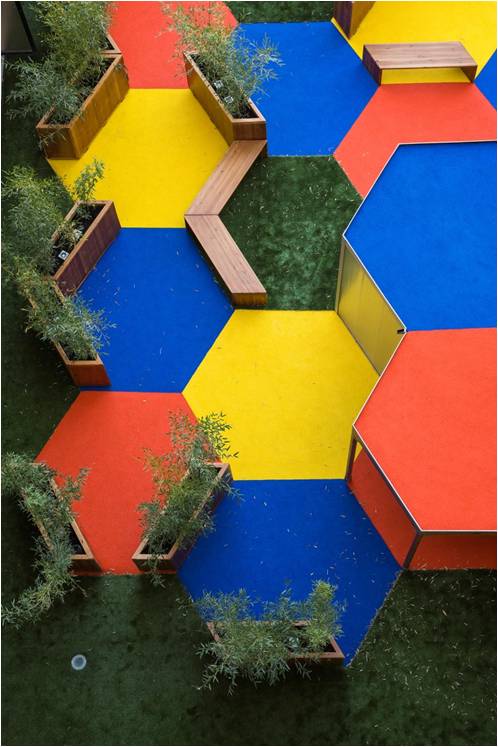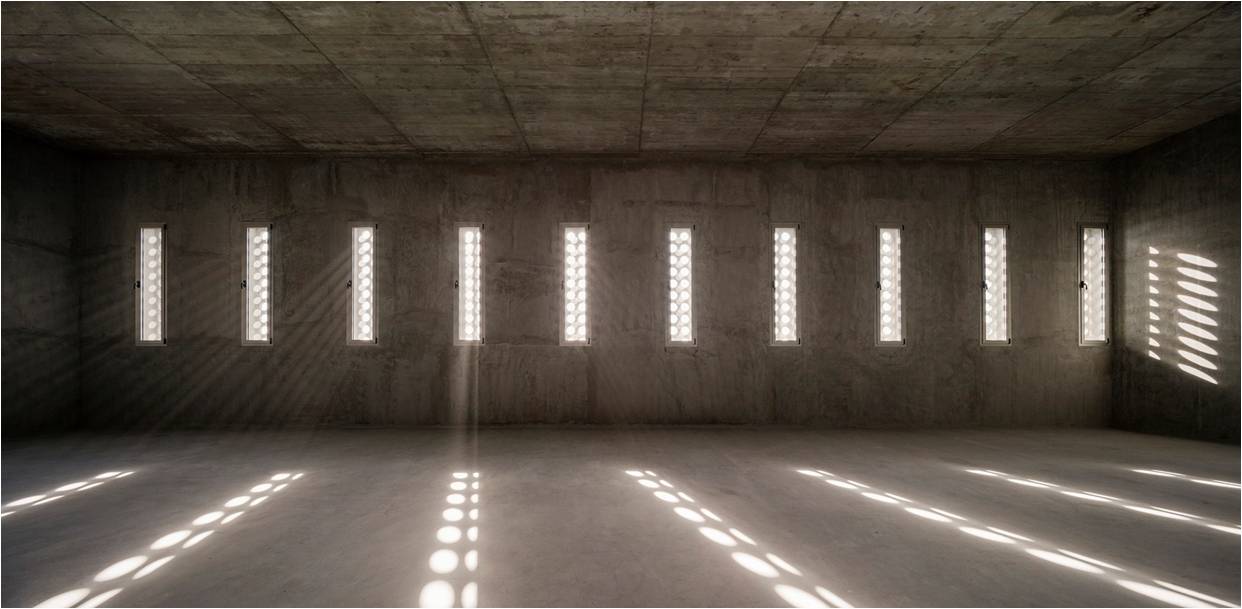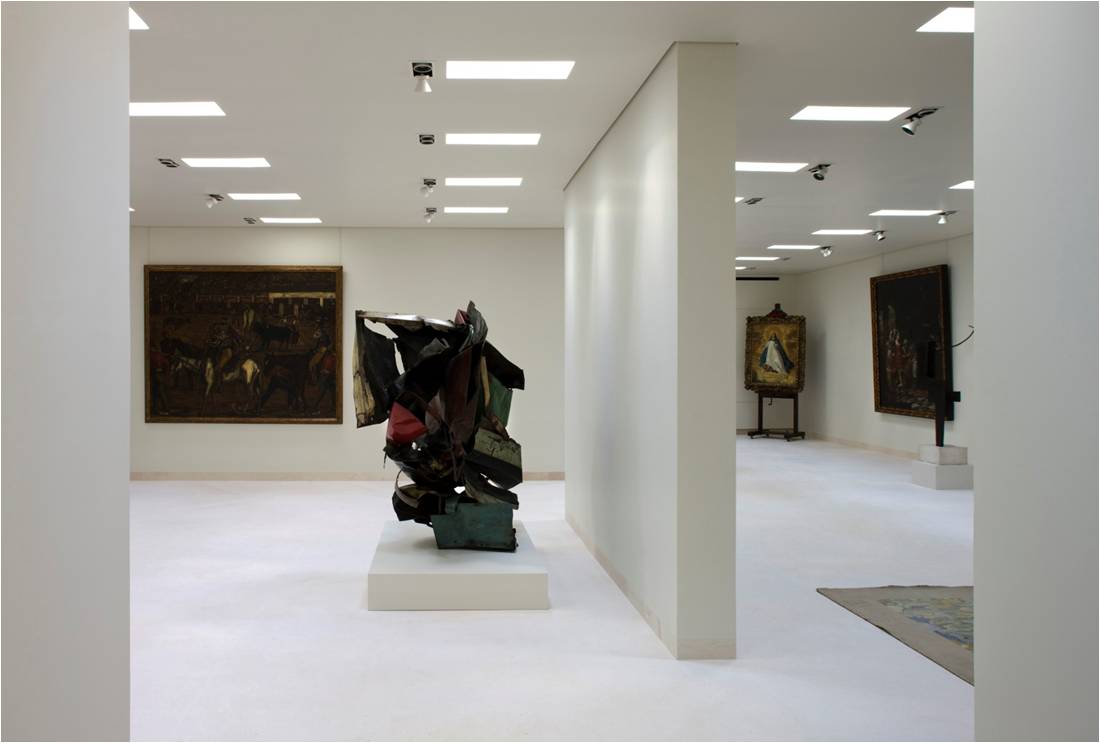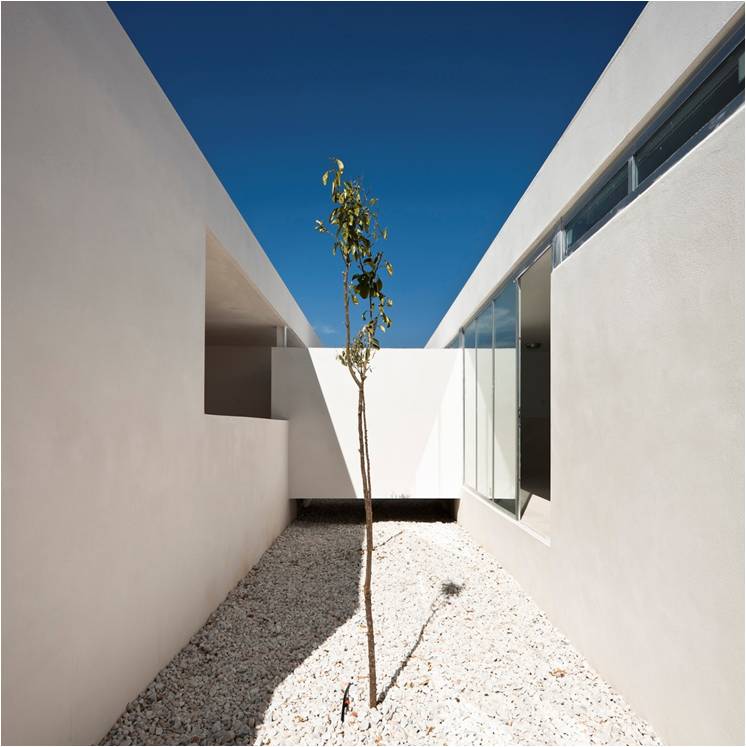Elisa Valero Ramos (Spain)
The not-so-obvious idea that architecture can be a means for responding to deep needs is an idea that substantiates the complex work of Elisa Valero Ramos, providing a criteria for cross-reading her many projects.
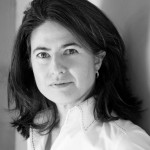 The Spanish architect has been working over the last decade mainly on two major conceptual and operational themes. The first is the pursuit of a low-cost construction system for the creation of buildings with near-zero energy consumption, research that has led to the development of the double-shelled Elesdopa construction system from conception to execution, a system of high technical and economic efficiency. The second theme developed is largely typological and concerns the creation of spaces designed especially for children. The construction of a multifunctional space for the school Cerrillo de Maracena a Granada (2014) was an opportunity to apply both themes. The structure, based on the Elesdopa system, is formed by a double shell of reinforced concrete that contains a layer of thermal insulating material within it. www.elisavalero.com
The Spanish architect has been working over the last decade mainly on two major conceptual and operational themes. The first is the pursuit of a low-cost construction system for the creation of buildings with near-zero energy consumption, research that has led to the development of the double-shelled Elesdopa construction system from conception to execution, a system of high technical and economic efficiency. The second theme developed is largely typological and concerns the creation of spaces designed especially for children. The construction of a multifunctional space for the school Cerrillo de Maracena a Granada (2014) was an opportunity to apply both themes. The structure, based on the Elesdopa system, is formed by a double shell of reinforced concrete that contains a layer of thermal insulating material within it. www.elisavalero.com
CANDIDATE VISION
“I am interested in living space, landscape, architecture for children, sustainability, precision and economy of expressive resources. I am more interested in consistency than in genius, in coherency than in artistic composition. I am interested in architecture rooted in the earth and in its own time. Although it is no longer fashionable to speak of serving, I believe that an architect’s work is a quintessential service intended to make people’s lives more agreeable—a noble calling that seeks to make the world more beautiful and more human and to make society fairer. Architecture is no place for the nostalgic; it is a job for rebels. In the last ten years I have been engaged in two areas of research. One is focused on low-cost construction systems for buildings with almost zero energy consumption. The technology to achieve high-efficiency houses is already available but too costly for the average person. We are developing a new construction system called Elesdopa (the Spanish acronym stands for double-shell structural system). Its remarkable technical and economic efficiency has already been proved. The second is about the factors that lead to early motivation in youngsters. Architecture for children looks for the best possible means to improve their future, which is the future of the world.”
PROJECT DATA
LIGHT PAVILION AND PLAYGROUND. HOSPITAL DE GETAFE
Location: Getafe, Madrid, Spain
Project Type: Architecture, Exterior Pavilion
Use of the Building: Playground for children’s oncological ward
Construction Period: October 2015 – November 2015
Awards/Publication: This work has just been completed, and has not yet been published or awarded.
Much has been said and written about the importance of play for children’s development and learning. Now is the time to flag up the role of play in children’s healing process. By providing the possibility of play, we are contributing to the child’s socialization and the acquisition of psychological and psychomotor abilities and skills, as well as providing a positive type of distraction that will enable them to forget about their illness for the period of time spent at play. The pediatric unit of the Getafe Hospital is in need of a playground for children aged between 3 and 9. It has allocated one of its terraces for this purpose. Since the terrace is north-facing, it is shadowy and may not seem very suitable for an outdoor playground: in winter the sun never reaches it, whereas in summer the high temperatures preclude outdoor play. Additionally, the space is surrounded by high walls, making it appear unwelcoming and even oppressive. The proposal is to build an outdoor play pavilion on the terrace. The effect will be a bubble of colors, which will be attractive to children, breaking with the main building’s hospital appearance by its shape and the materials used. The pavilion is light and bright, with light outside walls of double sheets of insulating polycarbonate, lit at the perimeters with RGB system lighting which enables changes of color. Inside, the zones for play, rest, reading and multimedia for the children and their families will be delineated by different furnishings and floor colors. Outside the pavilion is a covered zone with rubber flooring, planters and children’s furniture, so that when the weather permits they can enjoy the sunshine and fresh air.
NEW SPACE IN CERRILLO DE MARACENA SCHOOL
Location: Granada, Spain
Project Type: Architecture, retrofitting and extension
Use of the Building: Junior School
Construction Period: July 2014 – October 2014
Awards: Finalist XI International Prize Sustainable Architecture (Fassa Bortolo) 2015
The Cerrillo de Maracenas school is a 50-year-old parish school situated in a low-income suburb of Granada, with nearly 250 students under 12. The building was in need of a new flexible multipurpose space, and a second stairway for safety reasons. Valero built a new space, linked with the existing building, to become the new west façade. The rules of the game were very clear: there was very little money, two months in which to build, numerous building and other regulations, and the goal of energy efficiency. The project was successfully completed using the ELESDOPA construction system. This building system focuses on the optimization of concrete by using a structural element consisting of a double sheet of reinforced concrete (projected). Inside, thermal insulating material provides an unbroken swathe of high thermal insulation to prevent heat leaking out and cold coming in. On the outside there is nothing but concrete; inside, just concrete, and nothing but moving light and space to grow up in.
ART GALLERY FOR THE ARANGO HOUSE
Location: Valdemorillo, Madrid, Spain
Project Type: Architecture, retrofitting and extension
Use of the Building: Art gallery
Construction Period: October 2007 – December 2008
Awards: Selected for X Biennale of Spanish Architecture, 2009
Located on an estate near the mountains of El Escorial, the project is a solution to the need to join two houses into a single living space distinguished by the presence of important works of art. It is conceived as a container enabling co-habitation with the paintings and sculptures of a unique collection presenting the singular vision of Plácido Arango. Unlike a museum—a place for admiring and encountering art from time to time—this project faces the challenge of creating a living space in which light and the relationship with nature are particularly important. A small internal garden with oak and cork trees establishes a new connection between the two houses. The union takes the form of rooms buried like tubers, whose shapes are adapted to avoid damage to the tree roots. Thanks to the freedom given by a lack of concern with appearances (the project does not emerge above ground) the walls bend, happily and without inhibitions, accepting simplicity as a synonym of precision, a simplicity that dissolves the complexity that is inherent in architecture.
KINDERGARTEN IN LA CHANA
Location: La Chana, Granada, Spain
Project Type: Architecture
Use of the Building: Kindergarten
Construction Period: January 2009 / May 2010
Awards: Finalist in the XI Bienal Española de Arquitectura y Urbanismo 2009-2010. Ministerio de Fomento. 2011
Place, program and construction determine the form of this kindergarten. The objectives are to make a functional building facing the right way, opening the classrooms and the large patio to the south, and doing so in a rapid, rational way. Straightforward geometry, all on one level to facilitate access. The entire building program is resolved under a roof of three continuous strips separated by patios. The outside is enclosed by a high white wall that protects the children and their play from the view and noise of the street and the nearby railroad crossing. The entryway is angled so that the exit is tangential to the street. There are two entrances, one for the children and parents, and the other for supplies, the service zone and kitchen. All of the classrooms for children from one to three years open on to a patio of over 600 meters, which is a safe zone in case of evacuation. This rational distribution is adapted to a modular structure that optimizes the use of steel, the search for light and a large playground to the south for the children. The project facilitates construction, minimizes details and meets, with a minimum number of elements, all the specific requirements of the program while avoiding singularities. This approach established the building criteria and rules of construction, facilitating the process and minimizing on-the-job errors. The program consisted of a kindergarten with seven units: 2 for 0-1 years, 2 for 1-2 years and 3 for 2-3 years, for a total of 102 children. Each unit required a classroom with its corresponding bathrooms, which could be shared by two classrooms, an administration area, a bathroom for the handicapped, a multipurpose space and a service area with a scullery, pantry, garbage room, laundry room, cleaning closet, equipment room and changing rooms for the personnel. This is completed with a porch area at the entrance and a playground to the south, with a vegetable garden.
BIOGRAPHY
Ciudad Real (SPAIN), 12 September 1971 Elisa Valero Ramos is an architect who runs her own practice in Granada, Spain. Author of five books, she is also a full professor at Granada University. Elisa has led various governmental research projects and has been invited to teach all around the world, most recently at LSBU and the AA School of Architecture. She began her career in Mexico with the restoration of Felix Candela’s work, ‘Los Manantiales‘, and wrote her first book at the Academia de España in Rome. Since 1997, her workplace has been a small office in front of the Alhambra. Her ties to the art world began in her childhood and her work involves interaction with other arts. She is interested in living space, architecture for children, landscape, sustainability, precision and an economy of expressive resources. Elisa understands originality as the rediscovery of the true meaning of things and is interested in architecture rooted in the earth and in its own time. Architecture conditions are the rules of a very serious and enjoyable game she tries to play in a coherent, rigorous way. She believes that architecture is a quintessential service intended to make people’s lives easier, the world more beautiful and society fairer. Architecture is no place for the nostalgic, it is a job for rebels.



